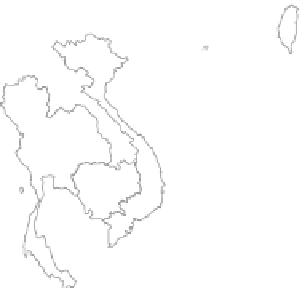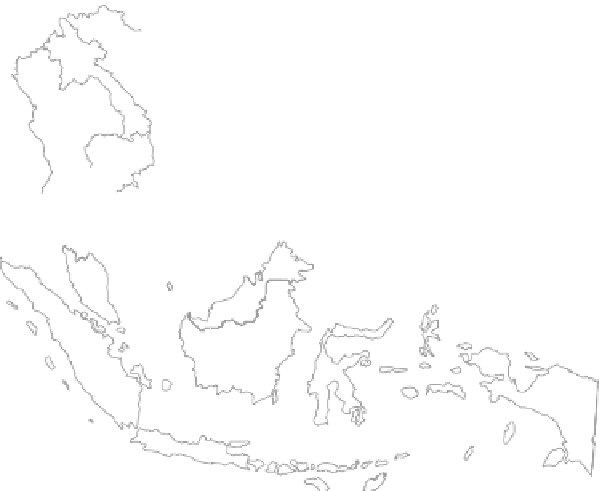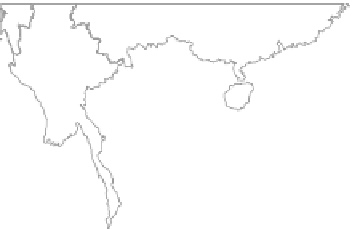Geography Reference
In-Depth Information
CHINA
International labour
migration (thousands)
MYANMAR
0
1000
Hong
Kong
Kilometers
200
HINA
LA
LAOS
400
140
5
THAILAND
PHILIPPINES
100
20
CAMBODIA
15
VIETNAM
25
20
70
80
22
12
180
A
I
S
Y
A
L
A
M
MALAYSI
A
BRUNEI
300
25
200
SINGAPORE
700
20
S
TIMOR-LESTE
Figure 14-16
Selected flows of intra-regional labor migration. Extra-regional flows such as Thais and
Filipinos to Japan are not included.
From Jonathan Rigg,
Southeast Asia: The Human Landscape
of Modernization and Development
. 2003 (Reprinted 2006), Figure 4.1, p. 163. Reprinted with
permission of Routledge.
well in measures of human development. The heritage
of relatively favorable gender relations and the re-
silience and pragmatism of local societies suggest
that the status of most Southeast Asian women can
only improve.
rice. Malaysian men and women take the causeway to Sin-
gapore to work in a variety of occupations there.
Unfortunately , foreign workers are exploited.
Even legal immigrants are paid less than locals for the
same work. They are housed in miserable dormitories
or live in shacks with few services. They work long
hours and can be fired for the tiniest infraction. This
is especially true for women, who are also subject to
sexual harassment. Illegal immigrants fare even
worse.
One study of Cambodian workers in Thailand
shows that they are engaged primarily in low-skilled,
low-paid, and often hazardous work. They are paid 30
to 50 percent less than Thai workers and are required
to work longer hours (10 or more hours a day). They
are often swindled and subject to arbitrary arrest and
detention. Female workers are regularly harassed. Y et
they still come because even these conditions are, at
least economically , better than what they experience at
home.
LABOR MIGRATION
According to geographer Jonathan Rigg (2006), “Southeast
Asia is rapidly becoming a regional human resource econ-
omy .” This is because borders are becoming more perme-
able; fewer legal and physical barriers allow people to cross
into countries with labor shortages such as Malaysia, Sin-
gapore, and Brunei. Wage differentials between countries
and between different sectors within countries encourage
worker migration (Figure 14-16).
Migrant laborers include both men and women. For
instance, both enter Thailand from Myanmar, Cambodia,
Laos, and China to work in the construction and sex indus-
try . Thai agricultural workers cross into Malaysia to harvest


















































































Search WWH ::

Custom Search